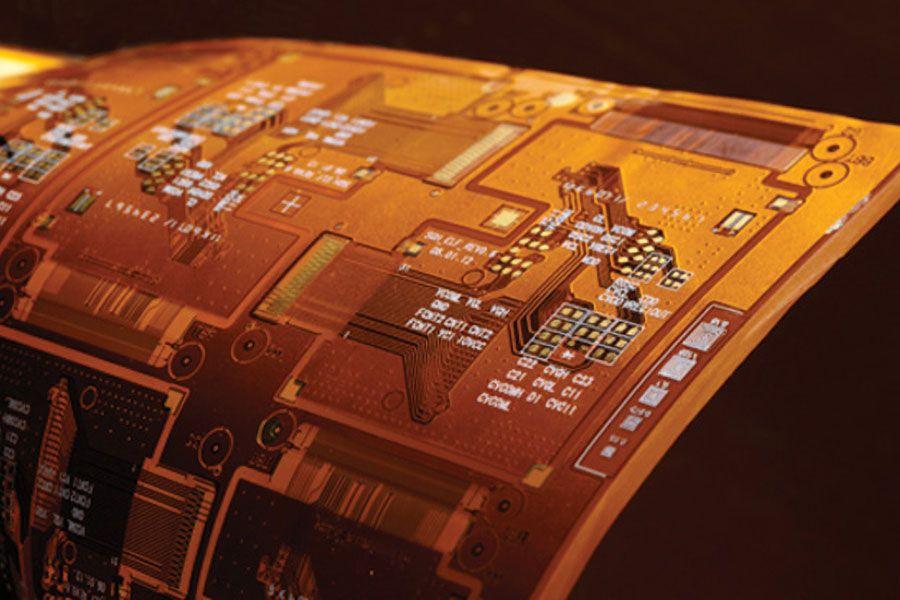In the ever-changing world of electronic technology, innovation is key to staying ahead of the technology. As the demands for smaller, more flexible, and high-performance electronic devices continue to grow, manufacturers are constantly seeking methods to innovate manufacturing processes. Flex circuit production is one of the most innovative techniques that has garnered a lot of interest.
Flexible printed circuit boards or Flexible Circuits (PCBs) are a great alternative to rigid PCBs. They have a number of advantages over rigid PCBs. They are made to bend in a variety of ways, twist, and adapt to different shapes, making them perfect for applications that require intricate designs, spaces, or greater durability.

Flex circuits let manufacturers expand the boundaries of design by offering the flexibility of a base that can adjust to the shape and size of the product. This allows for more imaginative and compact designs, eventually making lighter and smaller devices. Imagine a smartphone that seamlessly forms around your hand, a wearable health tracker that discreetly fits around your wrist, or an electronic device that has a sleek, ergonomic design. Engineers and designers can turn their designs into reality thanks to Flex Circuits, unlocking the possibilities of product design.
Flex circuits are durable and offer more than just aesthetic benefits. PCBs are susceptible to damage due to the impact of shock, vibration, and repetitive bends. However, flex circuits are built with specially-designed materials that are able to withstand these challenges, making them extremely reliable in harsh environments. This kind of durability is essential in industries such as aerospace, automotive medical, and aerospace, where electronic components must endure extreme conditions without compromising their performance. To know more, click flex circuit manufacturing
The manufacturing techniques used to produce the flex circuits have a huge impact on their impressive abilities. Unlike rigid PCBs that are constructed using several layers of fiberglass and copper, flex circuits are manufactured using a thin, flexible substrate, like polyimide and polyester. The substrate is the base of the circuit and allows it to be bent and bent while keeping electrical connectivity. Flexible circuit manufacturers can precisely etch circuit traces, join intricate interconnects as well as integrate components into the flexible substrate using advanced manufacturing techniques.
Surface mount technology also referred to as SMT, permits the integration of components onto the flex-circuit’s surface. This allows for greater flexibility and functionalities of the circuit. SMT permits manufacturers to place electronic components directly onto the surface of a device that is a flex circuit. This means that there is no need for bulky connectors, and reduces the size of the device. This method is not just efficient and improves signal integrity, it also decreases weight and improves thermal control.
Flexible circuit manufacturing methods can also be used to create rapid prototypes and are scalable to meet the requirements of larger numbers. The flexibility of circuit design makes it possible to make a rapid prototyping stage, thereby speeding up the product development cycle. Flex circuits can also be cost-effective for high-volume manufacturing since they can be made in large quantities with automated manufacturing techniques. These factors make them a popular choice for businesses looking to bring their innovative ideas to the market quickly and efficiently.
It is crucial to be able to rely on a reliable source for flexible circuits because the demand is expected to grow. Collaboration with experienced and reliable manufacturers is essential to ensure the quality of the product, as well as the accuracy and consistency in the manufacturing of flex circuits. These companies are able to offer guidance and insights on the design and production process. They also provide advice on material selection.
Flex circuits are crucial components that enable modern electronic assemblies to reach the top possible level of complexity. From displays used in consumer products to military applications and even military applications, flex circuits form the core of these uniquely complex systems. Flexible substrates, which are able to move through small spaces effortlessly, allow engineers to create intricate designs while fitting into tiny assembly footprints. Although a range of different types of circuit routing exist their electrical and mechanical properties simply can’t compare to those provided by the flex assembly solution when it comes to meeting tough size restrictions. Flexible circuits are a great choice for interconnections that are complex, that combine a variety of different technologies.